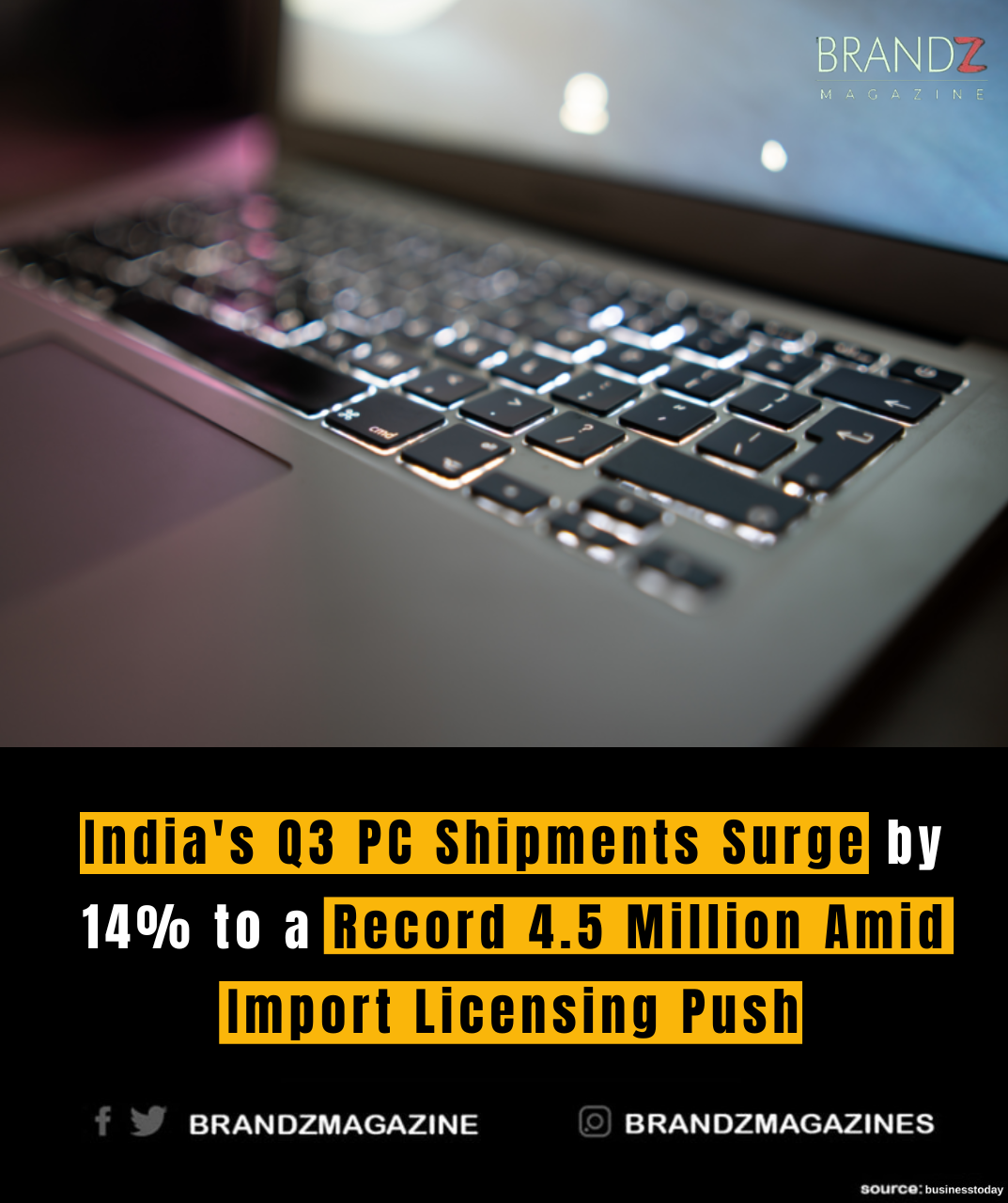
In a significant development for India’s technology market, the third quarter of the fiscal year witnessed a remarkable surge in PC shipments, reaching a record 4.5 million units. This substantial growth, amounting to a 14% increase, can be attributed to a strategic push in import licensing measures, signaling a robust demand for personal computing devices in the country.
Import Licensing Initiatives Driving Growth:
The surge in PC shipments during Q3 can be largely credited to the Indian government’s push for import licensing initiatives. These measures aim to strengthen the domestic manufacturing sector and reduce dependency on foreign imports. The import licensing push has encouraged both local and international manufacturers to establish or expand their production facilities in India, contributing to the record-breaking shipment numbers.
Rise in Remote Work and Digital Learning:
The ongoing global shift towards remote work and digital learning has played a pivotal role in boosting the demand for personal computing devices. With the COVID-19 pandemic accelerating the adoption of these trends, individuals and businesses alike are investing in PCs to facilitate seamless work and education experiences from the safety of their homes. The surge in shipments reflects the increasing reliance on technology to meet professional and educational needs.
Government’s ‘Make in India’ Initiative:
The impressive growth in Q3 PC shipments aligns with the Indian government’s ‘Make in India’ initiative, which aims to transform the country into a global manufacturing hub. The push for import licensing is a strategic component of this initiative, encouraging manufacturers to produce goods within India’s borders. The increased demand for PCs further supports the government’s vision of boosting domestic manufacturing and reducing dependence on imports.
Market Dynamics and Competitive Landscape:
The Q3 surge in PC shipments has not only been driven by demand but also by heightened competition among manufacturers. Both established players and new entrants are capitalizing on the growing market by offering a diverse range of computing devices. This competition has resulted in innovation, competitive pricing, and improved features, benefiting consumers with a variety of choices.
Challenges and Opportunities:
While the growth in PC shipments is a positive sign for the Indian technology market, it also presents challenges and opportunities. Manufacturers need to ensure the availability of components, address supply chain constraints, and meet the evolving needs of consumers. Simultaneously, there is an opportunity for collaboration between the government and industry stakeholders to create an ecosystem that fosters innovation and sustainable growth.
Impact on the Tech Ecosystem:
The surge in PC shipments has a ripple effect across the entire technology ecosystem. It influences the demand for related peripherals, software, and services, creating opportunities for ancillary businesses. The increased adoption of PCs for work and education is likely to fuel innovation in software applications and services tailored for these specific use cases.
Conclusion:
India’s Q3 PC shipment growth, driven by import licensing initiatives and the changing dynamics of work and education, marks a significant milestone in the country’s technology landscape. As the market continues to evolve, stakeholders must collaborate to address challenges and seize opportunities, ensuring sustainable growth and positioning India as a key player in the global technology manufacturing arena.

